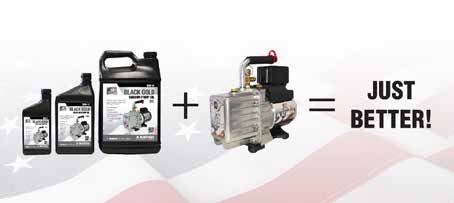
The most important take away from this blog is change. your. oil.
The proper oil in a vacuum pump acts as a blotter and absorbs all of the moisture and non-condensables. As the oil becomes saturated with these contaminants, the efficiency of the pump is dramatically reduced.
Maintaining clean oil in the pump ensures that the pump will operate at peak efficiency and prolong its life.
Use JB’s Black Gold Oil.
JB’s oil is extremely pure and non-detergent. Black Gold is hydro-processed which means it goes through a series of catalytic steps rendering the oil extremely refined, more viscous, and more stable. The result is a clear mineral oil that will alert you to contamination sooner as it becomes cloudy or milky.
Change your oil while the pump is still warm.
It’s best to change the oil when the pump is warm. As the pump cools, the moisture and contaminates start to separate in the pump and when drained, the contaminants cling to the walls of the pump. When you refill the pump with new oil, those contaminants will mix in with the new oil as the pump warms up resulting in the new oil quickly becoming contaminated.
Use a Micron Gauge.
It’s recommended that a micron gauge be attached directly to the pump and should pull to 50 microns or lower if the oil is clean. If the micron gauge does not pull to 50 microns, it is an indication that the oil is becoming contaminated and should be changed.
Check the oil level when the pump is running.
The reason for this is that if the vacuum is not broken before pumps are shut down the oil in the cover will seek the vacuum still in the cartridge and intake chamber. Then the oil level will drop in the sight glass and give the appearance of a low oil level. Then if the pump is refilled to the oil level line and the pump started, the oil that got sucked back into the cartridge and intake chamber will be kicked back into the cover and now you’ll be overfilled and the oil will shoot out the handle (exhaust port).

